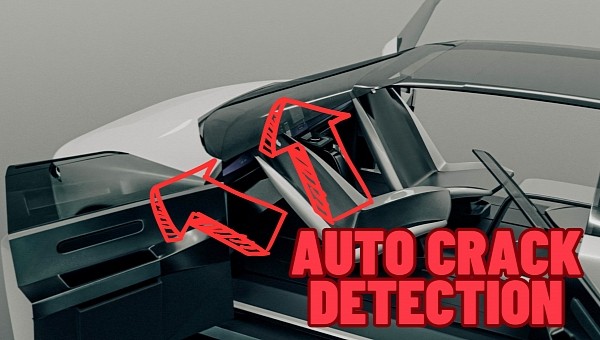Apple’s ambitious car project could launch with a new system whose purpose is to detect cracks in windows and issue an alert to the driver.
The Apple Car was supposed to bring an innovative approach to the conventional car concept from the very beginning. With ideas like full self-driving capabilities and a cabin converted into a living room on wheels, the Apple Car was seen as Apple’s number one product in the long term.
As such, the Cupertino-based tech firm is working on new systems that would prepare its vehicle for a tech revolution in the auto sector, including this new function to detect window cracks.
Apple explains in the patent that it could use control circuitry to find cracks by applying ohmic heating currents to windows.
The idea is as clever as it is simple. Using the technology that’s already integrated into windows for heating and deicing, the system would make resistance measurements across its surface. The windows can also feature conductive layers allowing for the same thing, so eventually, the measurements would help the vehicle determine if a crack exists in a specific window.
Apple says windows that come with layers of glass or rigid plastic can incorporate dielectric thin films that are impossible to see when looking at them. Thin-film metal layers, ink layers, or layers to block infrared and ultraviolet light can be used as well.
Eventually, as long as a conductive material is being used, the system would be able to perform the measurements. This is possible both when the window is being heated and independent from the process, as the vehicle can conduct regular checks to determine the integrity of the windows. The resistance measurement operations can also be triggered on demand, possibly at a service center during periodic maintenance.
Apple explains that cracks that extend into the conductive layer would cause the current flow to be impeded, with the resistance to eventually be increased. As such, the system would determine the change, warning of a possible crack in the window.
This idea would fit the Apple Car like a glove, especially given the vehicle’s increased focus on technology. Apple wants its self-driving EV to be centered around innovative tech, and systems like the new-generation CarPlay and smartphone integration would play an essential role in the promised living room on wheels.
People familiar with the matter said the Apple Car wouldn’t see daylight earlier than 2025. The vehicle might launch with a more conventional configuration at first, including limited self-driving capabilities. The cabin would also use the classic approach, with a steering wheel and pedals, as Apple hasn’t completed the work on its revolutionary living room design. An upgraded version of the Apple Car could follow towards the end of the decade.
As such, the Cupertino-based tech firm is working on new systems that would prepare its vehicle for a tech revolution in the auto sector, including this new function to detect window cracks.
Apple explains in the patent that it could use control circuitry to find cracks by applying ohmic heating currents to windows.
The idea is as clever as it is simple. Using the technology that’s already integrated into windows for heating and deicing, the system would make resistance measurements across its surface. The windows can also feature conductive layers allowing for the same thing, so eventually, the measurements would help the vehicle determine if a crack exists in a specific window.
Apple says windows that come with layers of glass or rigid plastic can incorporate dielectric thin films that are impossible to see when looking at them. Thin-film metal layers, ink layers, or layers to block infrared and ultraviolet light can be used as well.
Eventually, as long as a conductive material is being used, the system would be able to perform the measurements. This is possible both when the window is being heated and independent from the process, as the vehicle can conduct regular checks to determine the integrity of the windows. The resistance measurement operations can also be triggered on demand, possibly at a service center during periodic maintenance.
Apple explains that cracks that extend into the conductive layer would cause the current flow to be impeded, with the resistance to eventually be increased. As such, the system would determine the change, warning of a possible crack in the window.
This idea would fit the Apple Car like a glove, especially given the vehicle’s increased focus on technology. Apple wants its self-driving EV to be centered around innovative tech, and systems like the new-generation CarPlay and smartphone integration would play an essential role in the promised living room on wheels.
People familiar with the matter said the Apple Car wouldn’t see daylight earlier than 2025. The vehicle might launch with a more conventional configuration at first, including limited self-driving capabilities. The cabin would also use the classic approach, with a steering wheel and pedals, as Apple hasn’t completed the work on its revolutionary living room design. An upgraded version of the Apple Car could follow towards the end of the decade.










